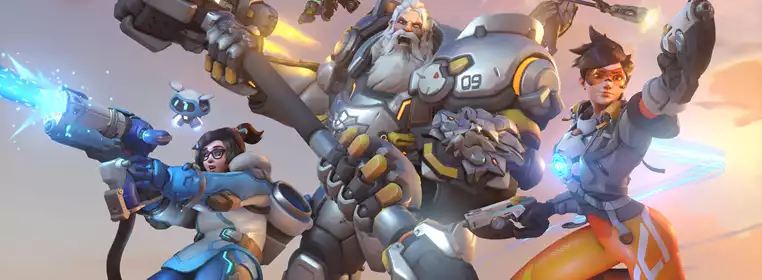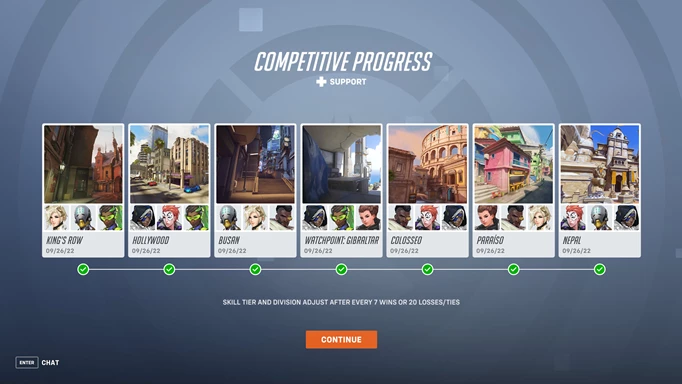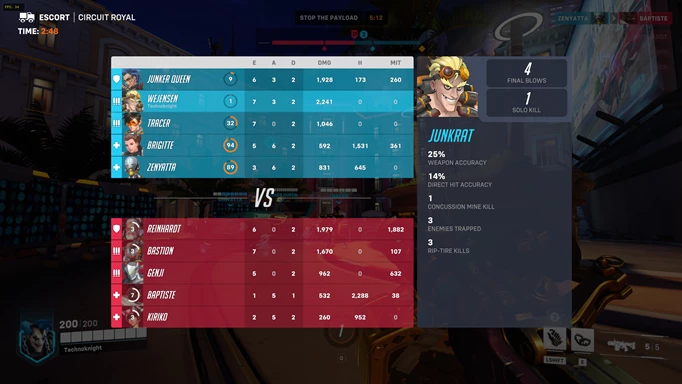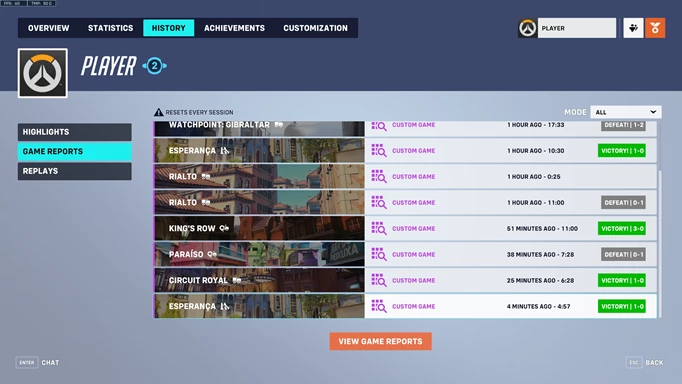Overwatch 2 Competitive Changes You Need To Know

Overwatch 2 is upon us, and plenty has changed in the competitive department. For those uninitiated, Overwatch competitive is one of the staple modes of play in the game. It allows players to really flex their muscles and show off their skill, with an aim to improve their overall competitive rank in the game. With the release of Overwatch 2, there are plenty of changes to the competitive mode that players need to be aware of. Here they all are, explained.
- Is Overwatch 2 free to play? Find out here.
Overwatch 2 Competitive Changes: Unlocking Competitive
First of all, the way in which you unlock the competitive mode has changed. In Overwatch 1, each player had a 'Portrait Level' which was a rough indication of how long they had played the game. It used to be that players must play Quick Play until they reached Portrait Level 25. At this point, they could then try their hand at Overwatch Competitive.
However, Portrait Levels are now a thing of the past in Overwatch 2. This means that Blizzard has introduced a new method to unlock the Competitive game mode. Now, players must win a total of 50 matches before they can play Overwatch Competitive. Losing a match won't count towards this total, either - players must earn a victory in a total of 50 matches before they can even think about playing competitively.
This rule only applies to new players that create an Overwatch account after October 4th, though. If you've previously played Overwatch and reached Portrait Level 25 to unlock Competitive, then you'll have access to it in Overwatch 2 automatically.
- Is Overwatch 2 cross-platform? We have the answers.
Overwatch 2 Competitive Changes: Skill Tier Divisions

 Click to enlarge
Click to enlargeLongtime Overwatch players will know all about SR and how it dictates your rank in Competitive. In Overwatch 2, SR is being removed as a visible number that players can see. Instead, Blizzard is introducing Skill Tiers that will dictate which division a player ranks in.
Ranks are still here, though. The lowest rank is classed as Bronze, which then advances through Silver, Gold, Platinum, Diamond, Master, Grand Master, and Top 500. However, these ranks are now split up into five divisions which will indicate a player's progression through the tiers. They're ranked from one to five, with five being the lowest and one being the highest.
Skill progressions are no longer announced at the end of every game, too. Instead, you'll receive an updated rank after either every seven wins or 20 losses/ties. You can check this progress in your competitive progress match history.
- Is there cross-progression in Overwatch 2? Find out here.
Overwatch 2 Competitive Changes: Match Focused UI

 Click to enlarge
Click to enlargeThe Overwatch 2 Competitive UI has been completely redesigned to present more vital information to your teammates. Competitive skill tiers are no longer visible to your teammates, so there should be reduced judgement when joining a match with randoms. Instead, the scoreboard now only displays your nametag and titles.
In addition, the new scoreboard will display the eliminations, assists, and deaths of everyone in the game. There's also a complete breakdown of the damage output, healing output, and damage mitigated of everyone in the game. The idea is that the new information should help teams adjust their compositions and strategy accordingly.
Finally, there's also a new ping system that's akin to the one found in VALORANT and Apex Legends. This will provide an alternative communication system for those that don't wish to use voice chat.
Overwatch 2 Competitive Changes: Placement Matches
The way that placement matches take place has also changed in Overwatch 2. At the start of each season, players previously needed to complete five matches to find their new rank. In Overwatch 2 Competitive, however, players must now either win seven matches or lose/tie 20 matches to be placed.
Those that were ranked in the first Overwatch game may find that their starting placement is a little lower than it was before. This is because Blizzard claims that Overwatch 2 is very different with different strategies and metas. As such, the team has applied an algorithm to the placement system that will place previous players a little lower. They will then have to relearn the new game to work their way back up the skill divisions.
Overwatch 2 Competitive Changes: Game Reports

 Click to enlarge
Click to enlargeGame Reports are a new feature in Overwatch 2 which will let you analyse your performance in previous games. Located under the 'History' tab, players can find a complete breakdown of their statistics from each game, as well as replays and highlights that may have been saved.
Overwatch 2 Competitive Changes: Skill Decay
Skill Decay is a feature that persisted in the higher skill tiers in Overwatch 1 Competitive. This would see the SR rating of players decay if they didn't play the game for an extended period of time.
Skill Decay is still prevalent in Overwatch 2, but has been adapted slightly. If you return to Overwatch 2 Competitive after not playing for a while, then you may find yourself ranked slightly lower than normal. However, their rank will be adjusted more quickly than if they were to play consistently. In theory, this means that they'll be able to return to their original rank if they retain the same relative skill.
- Looking to merge accounts for cross-progression in Overwatch 2? Here's how to do it.
Overwatch 2 Competitive Changes: Rewards
Blizzard is removing the sprays and icons that were once unlockable as rewards in Competitive play. Instead, players can now earn titles to be displayed on their leaderboard name cards.
On top of that, players can still earn Competitive Points as a form of currency. A win will earn you 15 CP, while a draw will earn you 5 CP. These can be spent on Golden Weapon skins for each of the heroes in Overwatch 2. One Golden Weapon will set you back 3,000 points, which equates to roughly 200 wins, or 600 draws. Be wary, though - Blizzard will limit the amount of bonus CP points you can earn based on your highest final skill tier at the end of each season.
That's all you need to know about the Competitive changes coming to Overwatch 2. For more Overwatch 2 guides, keep reading GGRecon.
